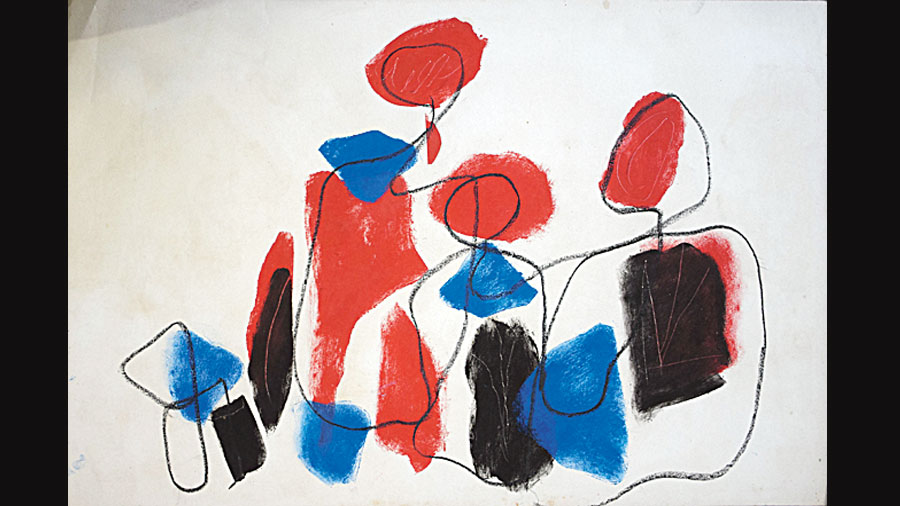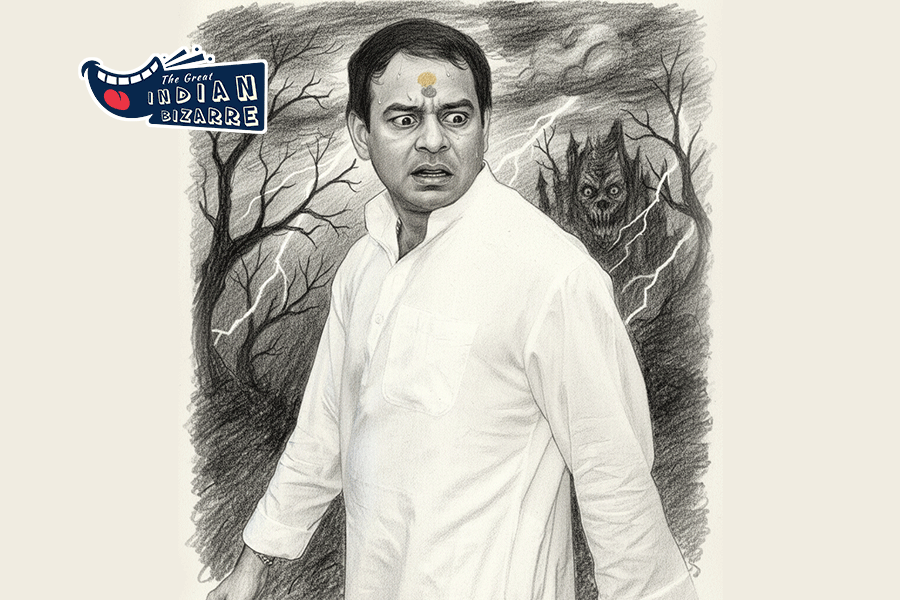Debovasha celebrated Somnath Hore’s birth centenary with an exhibition of a wide range of the master’s works, from impromptu drawings, sketches that give an indication of thoughts that may have taken shape later as full-blown works, to prints, including some fine etchings. The more than 61 works on display covered a long period of time, from 1963, when his first exhibition was held, right up to 2005, a year before his death. Many of them were done in notebooks.
Hore did a series of portraits, the most striking one being a painting of a baby with a cherub-like expression. The moustachioed young man with high cheekbones is sensitively rendered. The sepia tones enhance the delicacy of this work. The turbaned head with a black sketch pen is rather unusual for Hore. He also did a colourful version of it — a study in rainbow shades amidst mostly monochromatic works.
Like many resident artists of Santiniketan, Hore was a keen observer of nature — poultry, goats, monkeys, a duck with its ducklings, mating street dogs, suckling puppies, nothing escaped his eye. The realism of these drawings is quite remarkable. Was the drawing of the horse (perhaps a toy) with its hind limbs tied with a rope meant to be a caricature? He did a similar exercise with the human figure too.
There are familiar subjects too, such as skeletal survivors of famines and other man-made disasters as well as the dramatic battle (etching) between the forces of evil and good, not unlike some wall paintings in Buddhist caves. Moving from figurative work, Hore experimented with pure abstraction where he broke free from the physical world. Touches of colour enliven some of these examples of graphic art. These are typical works done probably in the 1960s and 1970s. Hore had reduced the human figure to its basics, turning it into geometrical shapes. Of Hore’s nude studies, the one of the woman lying on a bed with her head on a bolster is outstanding for its earthiness.











